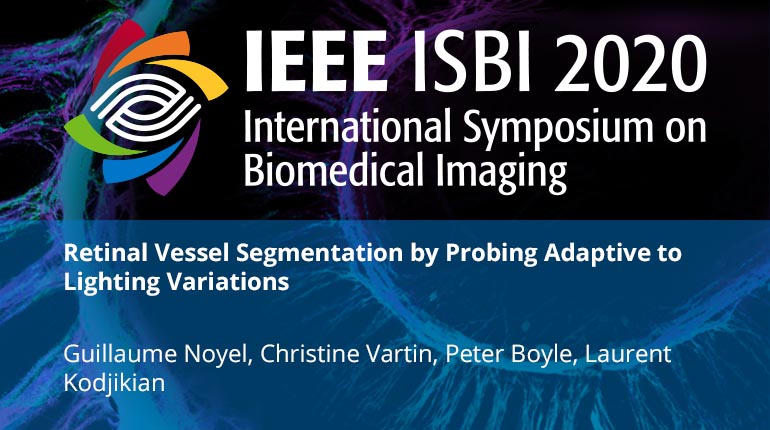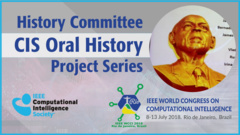
Already purchased this program?
Login to View
This video program is a part of the Premium package:
Retinal Vessel Segmentation by Probing Adaptive to Lighting Variations
- IEEE MemberUS $11.00
- Society MemberUS $0.00
- IEEE Student MemberUS $11.00
- Non-IEEE MemberUS $15.00
Retinal Vessel Segmentation by Probing Adaptive to Lighting Variations
We introduce a novel method to extract the vessels in eye fundus images which is adaptive to lighting variations. In the Logarithmic Image Processing framework, a 3-segment probe detects the vessels by probing the topographic surface of an image from below. A map of contrasts between the probe and the image allows to detect the vessels by a threshold. In a lowly contrasted image, results show that our method better extract the vessels than another state-of the-art method. In a highly contrasted image database (DRIVE) with a reference, ours has an accuracy of 0.9454 which is similar or better than three state-of-the-art methods and below three others. The three best methods have a higher accuracy than a manual segmentation by another expert. Importantly, our method automatically adapts to the lighting conditions of the image acquisition.
We introduce a novel method to extract the vessels in eye fundus images which is adaptive to lighting variations. In the Logarithmic Image Processing framework, a 3-segment probe detects the vessels by probing the topographic surface of an image from below. A map of contrasts between the probe and the image allows to detect the vessels by a threshold. In a lowly contrasted image, results show that our method better extract the vessels than another state-of the-art method. In a highly contrasted image database (DRIVE) with a reference, ours has an accuracy of 0.9454 which is similar or better than three state-of-the-art methods and below three others. The three best methods have a higher accuracy than a manual segmentation by another expert. Importantly, our method automatically adapts to the lighting conditions of the image acquisition.
 Cart
Cart Create Account
Create Account Sign In
Sign In





